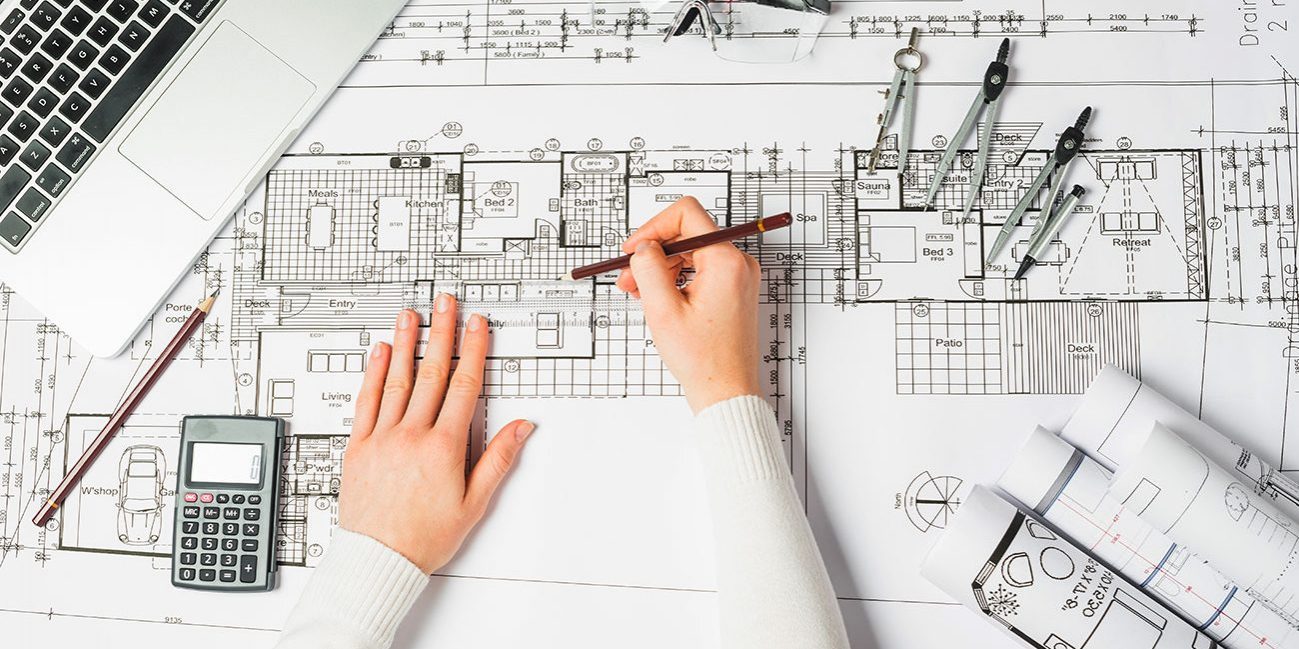Recognizing the Diverse Career Paths Available for Aspiring Architect
As a hopeful Architect, you have a globe of career paths waiting for you. Whether you're attracted to standard architecture or the subtleties of sustainable style, there's a specific niche that aligns with your interests.
Conventional Style: Designing Buildings and Frameworks
Conventional style concentrates on making buildings and frameworks that blend performance with aesthetic appeal. As you discover this field, you'll value the complex equilibrium in between type and objective. You'll discover to draw ideas from historic designs, integrating aspects like symmetry, materials, and workmanship. Your designs can show cultural heritage, showcasing local customs while meeting contemporary needs.
You'll develop skills in preparing, model-making, and site evaluation, allowing you to envision and communicate your ideas successfully. Involving with customers, you'll require to comprehend their vision and convert it right into possible styles.
Moreover, constructing codes and sustainability methods are necessary in your work, ensuring your frameworks are secure and ecologically friendly. As you grow in your occupation, you'll discover possibilities in domestic, commercial, and even repair tasks, each offering one-of-a-kind difficulties. Welcoming standard architecture leads the way for a meeting occupation that pays tribute to the past while forming the future.
Urban Planning: Forming Communities and Public Spaces
As an aspiring Architect, you can play a necessary role as a metropolitan coordinator, transforming exactly how communities work and engage. By using area engagement approaches, you'll guarantee that citizens have a voice fit their atmosphere. And also, incorporating sustainable style concepts will aid create rooms that not just satisfy today's needs yet additionally protect the future.
Duty of Urban Planners
While several might think of designers as the sole enthusiasts behind buildings, city planners play an essential function in shaping the broader landscape of areas and public rooms. By teaming up with different stakeholders, you'll assist create parks, transportation systems, and household locations that advertise social interaction and access. Your proficiency in spatial layout and community dynamics enables you to envision future development while protecting social heritage.
Community Interaction Strategies
Effective community involvement approaches are essential for urban coordinators to ensure that the voices of homeowners are listened to and valued in the preparation process. To cultivate significant dialogue, you ought to focus on open discussion forums and workshops where area participants can share their ideas and concerns. Use surveys and social media to get to a more comprehensive target market, making certain diverse perspectives are consisted of. Working together with regional organizations can enhance count on and facilitate much deeper connections. It is necessary to give clear info concerning proposed tasks and decision-making procedures, allowing homeowners to feel educated and equipped. By actively listening and including feedback, you'll develop spaces that mirror the neighborhood's demands, ultimately causing even more sustainable and successful city settings. Embrace openness and continual dialogue for long-term effect.
Sustainable Layout Principles
When making urban spaces, incorporating lasting design principles is vital for producing atmospheres that thrive both ecologically and socially. You should begin by concentrating on energy efficiency, making use of products that decrease waste and promote recycling. Take into consideration integrating eco-friendly areas, like gardens and parks, to boost biodiversity and improve air quality. Promoting walkability and public transportation can lessen reliance on vehicles, cultivating a much healthier community.
Creating with water preservation in mind is additionally vital-- think of rain gardens and permeable surfaces to take care of stormwater. Including community members during the preparation process assurances that the rooms you produce meet their needs and urge social communication. By embracing these principles, you'll add to vibrant, sustainable city landscapes that profit everybody.

Landscape Architecture: Producing Lasting Outdoor Environments
As you discover landscape design, you'll uncover important layout principles that create practical and attractive outdoor rooms. Lasting methods play an important duty in making sure these environments prosper while lessening ecological influence. Plus, you'll discover a variety of career chances that allow you to make a real difference in how people interact with nature.
Design Concepts in Landscape
Understanding style principles in landscape style is vital for producing lasting exterior environments that harmonize with nature. You'll need to contemplate components like range, equilibrium, and proportion to ensure your styles really feel natural and inviting. Furthermore, pay attention to seasonal modifications, developing with products that match the environments year-round.
Sustainable Practices Introduction
Sustainable practices in landscape architecture not only concentrate on visual appeals however likewise focus on environmental wellness and source conservation. By incorporating native plants, you enhance biodiversity and reduce the requirement for chemical plant foods and chemicals. Carrying out reliable watering systems assists conserve water and reduces drainage, protecting neighboring communities. You can develop spaces that promote soil health and wellness, such as utilizing natural materials and practicing permaculture principles. In addition, integrating green framework, like rain gardens and permeable pavements, aids in stormwater monitoring and minimizes city warmth. You add to a healthier world and supply spaces that cultivate area connection when you create outdoor settings with sustainability in mind. Inevitably, these methods ensure your layouts benefit both people and the environment for several years ahead.
Profession Opportunities Exploration
With a strong foundation in lasting practices, landscape view it now style uses a selection of profession paths that enable you to make a meaningful influence on the setting. You can work as a landscape developer, creating visually pleasing and useful outdoor areas, or specialize in environmental remediation, aiding to restore damaged communities. Urban planners frequently work together with landscape designers to create environment-friendly rooms in urban settings, improving city livability. If you're enthusiastic about education, take into consideration ending up being a landscape architecture educator, inspiring future generations. In addition, you may collaborate with nonprofits concentrated on ecological sustainability or take part in study to innovate new practices. Each path not only shapes lovely atmospheres yet likewise cultivates a healthier planet for future generations.
Sustainable Design: Concentrating On Eco-Friendly Practices
As you discover your occupation in design, accepting environment-friendly techniques can set you apart in an affordable area. Lasting layout focuses on developing structures that reduce ecological influence while boosting resident health. By incorporating renewable materials, energy-efficient systems, and sustainable structure methods, you'll add to a greener future.
Start by acquiring understanding of environment-friendly qualifications like LEED or BREEAM, which can bolster your qualifications. Consider just how all-natural light, air flow, and thermal performance can optimize design. Work together with designers and environmental consultants to introduce services that lower waste and conserve resources.
Do not neglect the importance of area participation-- appealing neighborhood stakeholders can inspire designs that integrate with the setting. As customers significantly focus on sustainability, your competence in eco-friendly techniques will not just bring in jobs however likewise meet your interest for liable design. Embrace this vital aspect of the occupation, and enjoy your occupation prosper.
Historical Preservation: Safeguarding and Recovering Cultural Heritage
While you commence on your building journey, take into consideration the essential function of historic conservation in preserving our social heritage. This area concentrates on the defense and remediation of considerable buildings, websites, and frameworks that tell the stories of our past. By participating in historic preservation, you'll assist guard the building legacy that shapes area identification.
As a historic conservation Architect, you'll analyze historic value and evaluate the condition of frameworks. You'll function very closely with preservationists and chroniclers to guarantee authentic restoration methods are used. This career course allows you to mix imagination with study, enabling you to make solutions check my reference that respect original products and craftsmanship.
Your work not only adds to sustainability by reusing existing structures however likewise promotes a feeling of satisfaction within communities. Welcoming this path will certainly help you become a guardian of history, maintaining the tales and looks that enhance our lives.
Interior Style: Enhancing Indoor Spaces
Historical conservation and interior architecture both share a dedication to improving the built atmosphere, however they concentrate on different facets. While historic conservation emphasizes preserving a structure's historical and social value, interior style absolutely nos in on enhancing interior areas for capability and aesthetics.
As a hopeful Architect, you'll locate that indoor architecture enables you to mix imagination with technical skills. You'll design spaces that not just look excellent however also advertise convenience and performance. This field includes recognizing just how light, shade, and products engage within a space, influencing state of mind and functionality.
You'll function on numerous jobs, from household homes to commercial workplaces, making sure that each setting fulfills the demands of its passengers. By prioritizing user experience, you can change interiors into motivating and useful spaces, making a significant effect on how individuals interact with their environments. Welcome the possibility to boost interior environments and form the means people work and live.
Industrial Style: Merging Performance With Aesthetic Appeals
Industrial style plays a crucial function in producing items that flawlessly mix visual appeals with functionality, making certain that what you use day-to-day is not only aesthetically attractive however also practical. As an ambitious Architect, you might immerse on your own in this field, concentrating on creating everything from furniture to consumer electronic devices. Your work includes comprehending individual requirements, materials, and producing processes, enabling you to develop cutting-edge solutions that enhance daily experiences.
In industrial layout, you'll typically collaborate with producers, engineers, and online marketers, making certain that your styles are not just beautiful yet also possible. This profession path offers a vibrant setting where creative thinking satisfies functionality, making it a gratifying choice for engineers interested in forming the products of tomorrow.
Frequently Asked Inquiries
What Educational Certifications Do I Required to Become an Engineer?
To come to be a designer, you'll need a specialist degree in architecture, commonly a Bachelor's or Master's. Furthermore, you'll have to finish a teaching fellowship and pass the Architect Enrollment Exam to exercise legally.
Exist Accreditation Requirements for Various Architectural Career Paths?
Yes, there're qualification requirements for numerous architectural courses. Architect. You'll need to pass tests, complete teaching fellowships, and often go after specialized training, depending on your chosen emphasis, like landscape style, city layout, or historical conservation
What Software Skills Are Important for Designers Today?

How Can I Gain Practical Experience While Researching Design?
You can acquire sensible experience by interning at building firms, joining style competitors, volunteering for community jobs, or collaborating with schoolmates on real-world projects. These possibilities improve your abilities and develop valuable links in the industry.
What Work Opportunities Exist Outside Typical Design Firms?
You can discover different work chances outside typical design companies, like urban preparation, interior decoration, landscape style, construction monitoring, property advancement, and even roles in sustainability consulting. Each deals one-of-a-kind difficulties and incentives.
Whether you're drawn to conventional style or the nuances of sustainable style, there's a niche that lines up with your passions.When designing metropolitan rooms, integrating lasting design principles is vital for creating environments that prosper both environmentally and socially.As you explore landscape architecture, you'll find necessary design principles that produce attractive and functional exterior rooms.Understanding layout concepts in landscape design is important for producing sustainable outside atmospheres that integrate with nature.In commercial layout, you'll often collaborate with manufacturers, engineers, and marketers, making certain that your layouts are not just lovely however likewise possible.
Comments on “Architect Checklist for Recent Commercial Projects”